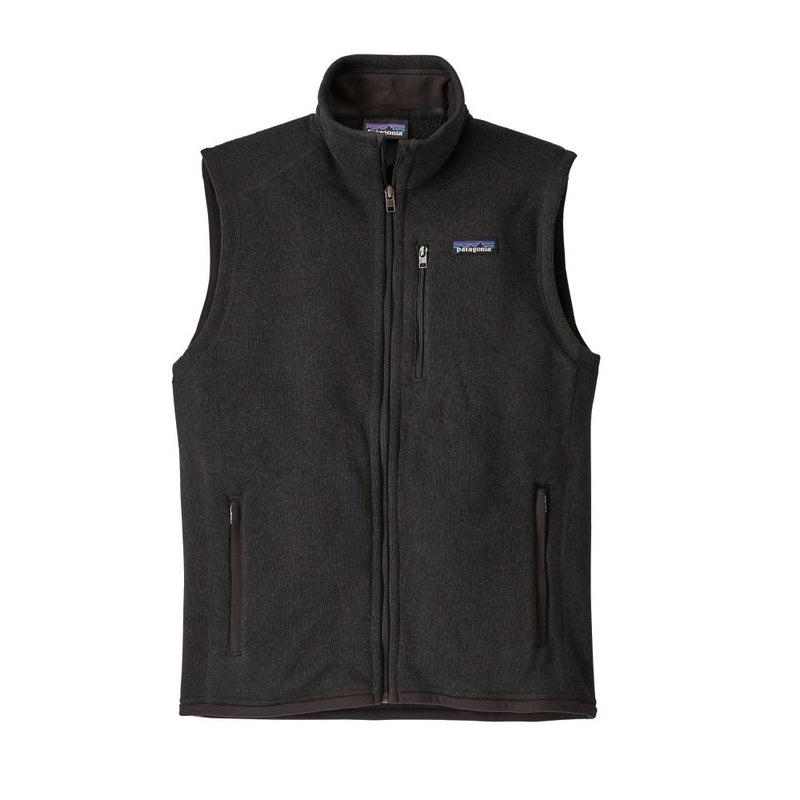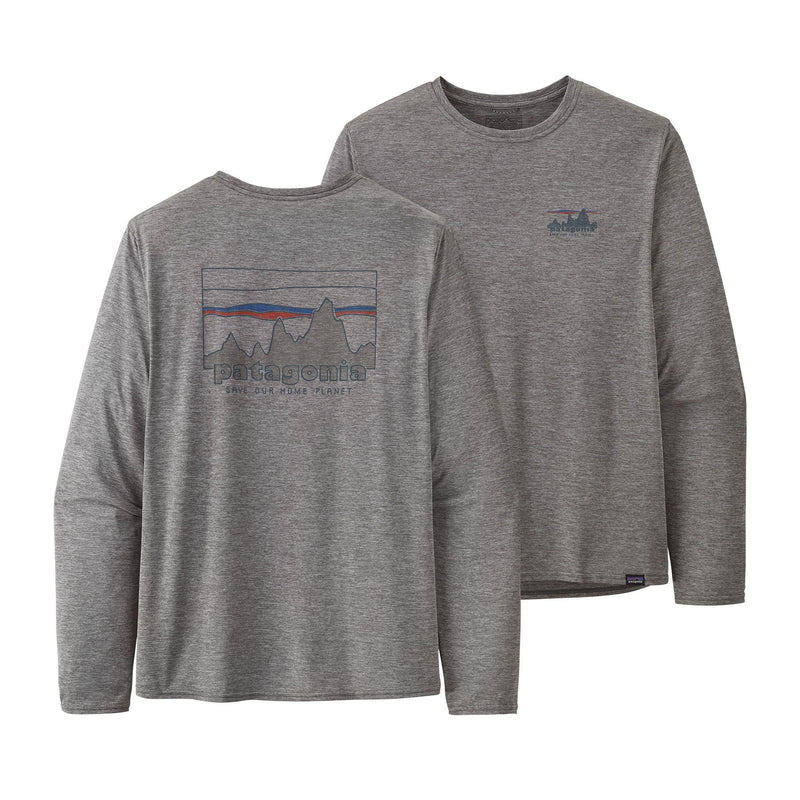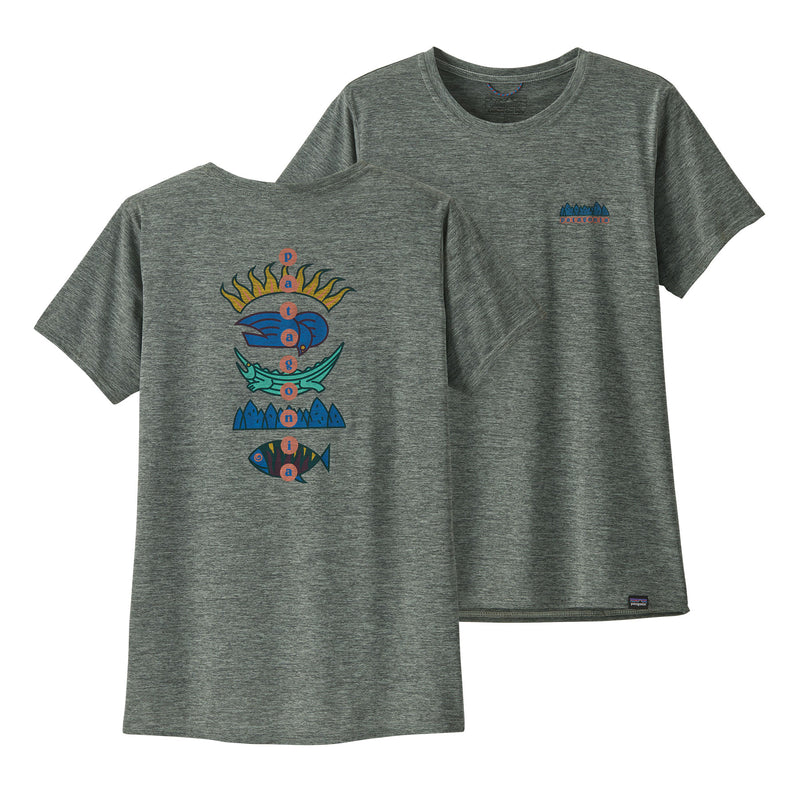Patagonia Men's Insulated Organic Cotton Midweight Fjord Flannel Shirt
More from Patagonia

Patagonia Men's Insulated Organic Cotton Midweight Fjord Flannel Shirt

An insulated, heavyweight 100% organic cotton flannel jacket that makes a great overshirt when temperatures drop. Made in a Fair Trade Certified™ factory.
_____________________________
Details:
Organic Cotton Flannel and Thermogreen® Insulation
Shell is made with 100% organic cotton yarn-dyed flannel, lined with 100% recycled polyester twill and insulated with 60-g Thermogreen® 100% recycled polyester
Button-Front Placket
Full-length button-front placket provides easy adjustability to accommodate changing conditions
Pocket Details
Two flapped chest pockets secure with buttons; side-entry handwarmer pockets on lower torso shelter your hands from cold weather
Straight Hem
Made with a straight hem to go with most every situation, from casual hangout to commuting to work or school
Supporting the People Who Made This Product
Made in a Fair Trade Certified™ factory, which means the people who made this product earned a premium for their labor
Country of Origin
Made in Vietnam.
Weight
680 g (24 oz)
_____________________________
Materials:
Shell
5.9-oz 100% organic cotton yarn-dyed flannel
Lining
2.4-oz 100% recycled polyester twill with a PFC-free DWR finish (durable water repellent coating that does not contain perfluorinated chemicals)
Insulation
60-g Thermogreen® 100% recycled polyester
Lining fabric is certified as bluesign® approved
Made in a Fair Trade Certified™ factory
Care Instructions
Machine Wash Cold, Do Not Bleach, Tumble Dry Low, Warm Iron
More from Patagonia about their Fjord Flannel Shirts:
How To Measure Your Shoe Size
| US Sizes | Euro Sizes | UK Sizes | Inches | CM |
|---|---|---|---|---|
| 4 | 35 | 2 | 8.1875" | 20.8 |
| 4.5 | 35 | 2.5 | 8.375" | 21.3 |
| 5 | 35-36 | 3 | 8.5" | 21.6 |
| 5.5 | 36 | 3.5 | 8.75" | 22.2 |
| 6 | 36-37 | 4 | 8.875" | 22.5 |
| 6.5 | 37 | 4.5 | 9.0625" | 23 |
| 7 | 37-38 | 5 | 9.25" | 23.5 |
| 7.5 | 38 | 5.5 | 9.375" | 23.8 |
| 8 | 38-39 | 6 | 9.5" | 24.1 |
| 8.5 | 39 | 6.5 | 9.6875" | 24.6 |
| 9 | 39-40 | 7 | 9.875" | 25.1 |
| 9.5 | 40 | 7.5 | 10" | 25.4 |
| 10 | 40-41 | 8 | 10.1875" | 25.9 |
| 10.5 | 41 | 8.5 | 10.3125" | 26.2 |
| 11 | 41-42 | 9 | 10.5" | 26.7 |
| 11.5 | 42 | 9.5 | 10.6875" | 27.1 |
| 12 | 42-43 | 10 | 10.875" | 27.6 |
Men's Shoe Size Conversions
| US Sizes | Euro Sizes | UK Sizes | Inches | CM |
|---|---|---|---|---|
| 6 | 39 | 5.5 | 9.25" | 23.5 |
| 6.5 | 39 | 6 | 9.5" | 24.1 |
| 7 | 40 | 6.5 | 9.625" | 24.4 |
| 7.5 | 40-41 | 7 | 9.75" | 24.8 |
| 8 | 41 | 7.5 | 9.9375" | 25.4 |
| 8.5 | 41-42 | 8 | 10.125" | 25.7 |
| 9 | 42 | 8.5 | 10.25" | 26 |
| 9.5 | 42-43 | 9 | 10.4375" | 26.7 |
| 10 | 43 | 9.5 | 10.5625" | 27 |
| 10.5 | 43-44 | 10 | 10.75" | 27.3 |
| 11 | 44 | 10.5 | 10.9375" | 27.9 |
| 11.5 | 44-45 | 11 | 11.125" | 28.3 |
| 12 | 45 | 11.5 | 11.25" | 28.6 |
| 13 | 46 | 12.5 | 11.5625" | 29.4 |
| 14 | 47 | 13.5 | 11.875" | 30.2 |
| 15 | 48 | 14.5 | 12.1875" | 31 |
| 16 | 49 | 15.5 | 12.5" | 31.8 |
| US Sizes | Euro Sizes | UK Sizes | Inches | CM |
|---|---|---|---|---|
| 3.5 | 35 | 2.5 | 8.625" | 21.9 |
| 4 | 36 | 3 | 8.75" | 22.2 |
| 4.5 | 36 | 3.5 | 9" | 22.9 |
| 5 | 37 | 4 | 9.125" | 23.2 |
| 5.5 | 37 | 4.5 | 9.25" | 23.5 |
| 6 | 38 | 5 | 9.5" | 24.1 |
| 6.5 | 38 | 5.5 | 9.625" | 24.4 |
| 7 | 39 | 6 | 9.75" | 24.8 |
| US Sizes | Euro Sizes | UK Sizes | Inches | CM |
|---|---|---|---|---|
| 10.5 | 27 | 9.5 | 6.625" | 16.8 |
| 11 | 28 | 10 | 6.75" | 17.1 |
| 11.5 | 29 | 10.5 | 7" | 17.8 |
| 12 | 30 | 11 | 7.125" | 18.1 |
| 12.5 | 30 | 11.5 | 7.25" | 18.4 |
| 13 | 31 | 12 | 7.5" | 19.1 |
| 13.5 | 31 | 12.5 | 7.625" | 19.4 |
| 1 | 32 | 13 | 7.75" | 19.7 |
| 1.5 | 33 | 14 | 8" | 20.3 |
| 2 | 33 | 1 | 8.125" | 20.6 |
| 2.5 | 34 | 1.5 | 8.25" | 21 |
| 3 | 34 | 2 | 8.5" | 21.6 |
FAQ & Tips
- What if I am between shoe sizes? We recommend you should size up, especially in active & sports shoes. This includes running shoes and hiking boots.
- Does 0.5 size make a difference in shoes? Yes, it certainly does! Wearing shoes that are too small can cause pain and injuries. Blisters, loss of toenails and bunions can all result from wearing shoes that are even 0.5 size too small. These are common ailments of beginner runners.
- Is one foot bigger than the other? It is common for people to have one foot that is slightly bigger than the other. Our tip is that you should buy shoes that fit the larger foot (buy pairs of shoes in the larger size of the two).
- Should shoes be tight or loose? Unfortunately, this is not a simple question. Shoes should not be too tight or too loose. You should be able to put a thumbs width at the end of your toe box, between your big toe and the pointy end of the shoe. You should also be able to snuggly fit your index finger between your heel and the back of the shoe. If you have not much (or not enough!) space in either of these areas, try a different size shoe.
- When should I try on shoes? A great tip for runners is to try on running shoes at the end of a work day. As you run, just like when you are on your feet for work, your feet swell. You will want to try on running shoes when your feet are at their largest. This allows them to still fit comfortably after a long distance run.
- What size shoe should I buy? This shoe chart is not a guarantee your shoes will fit. If you are in the area of Memphis, Tennessee, run on in to one of our running specialty & gear stores and our experienced fit experts will help you out!
Image below: A Brannock device is one tool run specialists use to measure shoe size. It can measure not only foot length, but also foot width.






































